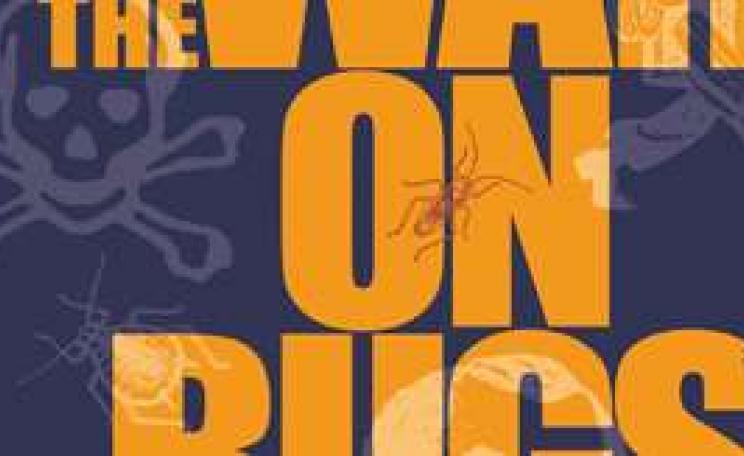Six reasons never to buy cut flowers again
1 Cash Crop impacts
In equatorial countries, where fertile land is a precious natural asset and food security is a recurrent problem, the cut flower industry continues to expand remorselessly. Investors in flower farms have no qualms about moving people off their lands. Exactly this happened to the Okiek people in the fertile Rift Valley region of Kenya. In March 1994 they were forced out of the Tinet Forest of Olenguruone to make way for a massive flower farm owned by a former governor of the Central Bank of Kenya.
• In 2000 sub-Saharan Africa supplied 43 per cent of the cut flowers imported into the EU. The value of these flowers was over €250m. And yet the UN’s Food and Agriculture Organisation estimates that 23 of these countries face severe food emergencies this year, and that over 60 per cent of their people have already suffered a 20 per cent decline in food available per head.
• After spending $27m promoting the export of cut flowers, India earned a measly $6.4m from the sector. As a direct result of this folly, the government budget for growing food was cut by 75 per cent.
2 Pesticide Abuse
There are no regulations governing the use of pesticides on cut flowers, and importers are not required to monitor pesticide levels. In fact, the importers’ demand for unblemished, pest-free flowers actually encourages growers to use excessive amounts of highly toxic chemicals. Farmed flowers are frequently and liberally sprayed with a multitude of chemicals including pesticides, fungicides and fumigants.
• The Colombian flower industry uses 200 kilogrammes of pesticides for each hectare of flowers under cultivation.
• Ecuadorian rose producers typically use six fungicides, four insecticides, three nematicides and several herbicides.
• Many of the chemicals used are unregulated or, as in the case of DDT, banned. Ozone-depleting fumigants like methyl bromide (one of the most toxic substances known to man) are also used, thus exacerbating the problems of greenhouse gas emissions. Kenya spends up to five per cent of its foreign exchange earnings on methyl bromide.
• Sloppy application of chemicals frequently leads to poisoned waterways and groundwater, which decimate local species of animals and plants. Colombia’s flower farms have contaminated the water table, subsoil and, until recently, cows’ milk; the locals had been feeding their cattle stalks discarded by the flower factories.
3 Poisoned Labourers
Flower farm workers are often deprived of even the most basic protection against chemicals, which are easily inhaled or absorbed through the skin. The problem is particularly acute in poorly ventilated greenhouses, where the pesticides and fumigants are often sprayed over the flowers before the workers have left the buildings.
• A World Resources Institute study found that 40 per cent of Ecuadorian workers had no protective equipment at all when pesticides were sprayed in their vicinity.
• A survey of 8,000 Colombian flower workers revealed that individuals had been exposed to as many as 127 different pesticides. Of these, 20 per cent were found to be banned or unregistered in the US, because they were known to be extremely toxic and/or carcinogenic.
• Two-thirds of Colombian floriculture labourers suffer from pesticide-related health problems, including impaired vision, still births, congenital malformations and respiratory and neurological problems.
• In Tipicaya, the capital of the Bolivian flower trade, 3.8 per cent of babies born in 2000 had some form of birth defect, and 8 per cent of hospital patients were women with miscarriages.
4 Water waste
Despite water scarcity across most equatorial countries, flower farms continue to thrive. Given that a large flower farm can use upwards of 80,000 litres of water every day, it is difficult to see how flower farm needs can be justified over those of food farming. Water conflicts between flower growers and local populations in Kenya are typical of the problems.
• Recurrent droughts in 2001 left three million people short of adequate water, yet Kenyan farmers still diverted enough water to produce over 52 million tonnes of flowers.
• Flower farms on the outskirts of Nairobi, are piped water from the slopes of Mount Kilimanjaro. The majority of people living in Nairobi have no water supply.
• At Lake Naivasha, Kenya’s main flower producing area, the commercial flower farms’ unrestrained plundering of the lake for water is destroying its ecosystem and leaving residents suffering from persistent water shortages.
5 Workers’ rights abused
When you buy your bunch of cut flowers, bare in mind that workers on the flower farms earn around $2 a day. Slave wages aside, investigations by the International Labour Rights Fund (ILRF) have uncovered frequent and serious labour rights abuses on flower farms across the world.
• In Kenya 90 per cent of female workers have been raped by their supervisors.
• Illegal pregnancy tests and dismissals of pregnant staff are commonplace for the industry’s mainly female workers.
• Unions are rare. Of the hundreds of flower companies in Ecuador, only three are unionised.
• To complete enormous quotas, for which workers are not paid overtime, parents often make their children work with them. The UN’s International Labour Organisation estimates that 48,000 children work on flower farms in two Ecuadorian provinces alone.
6 Flower miles
Despite being covered in chemicals, cut flowers do not have a long shelf life. To reach consumers in a perfect, plastic-like state they are flown into the UK from all round the world. When the miles from the fields to the airport and from the markets or wholesale importers to the retailers are added to the air miles, cut flowers are directly responsible for generating vast quantities of C02 emissions.
BOX: CUT FLOWER FACTS
• The world cut-flower market is currently growing at 6-9 per cent per year.
• There are more than 30,000 varieties of roses.
• It takes from 45 to 57 days to produce a market-quality rose in a greenhouse.
• The consumption of cut flowers is concentrated in three regions: Western Europe, North America and Japan.
• Reasons why UK consumers buy cut flowers: 43 per cent – own use; 41 per cent – gift; 12 per cent – funeral; 4 per cent – other.
• ‘There are people spending $30,000 to $40,000 just on flowers’ US wedding consultant Cliff Hassanally
• Over 9 million red roses are given in the UK and over 50 million roses worldwide each Valentine’s Day.
• When Princess Diana died over a million bunches of flowers were left at the Kensington Palace gates.
Which flowers come from where?
The UK’s desire for cheap, identical, pest-free cut flowers all year-round has created a market worth £1.2 billion annually. Some 85 per cent of these flowers are imported from abroad – shipped thousands of miles and sold, predominately in supermarkets, at lower prices than those of locally grown varieties.
Venezuela
carnations, roses
5,000 miles
Canary Islands
chrysanthemums, roses
1,750 miles
Morocco
spray carnations
1,500 miles
Holland
all flowers and pot plants
200 miles
Italy
carnations, chrysanthemums
6,000 miles
Turkey
spray carnations
1,750 miles
Colombia
carnations, roses
5,500 miles
Ecuador
carnations, roses
6,000 miles
Chile
carnations, roses
7,500 miles
Zimbabwe
roses, proteas, aster, solidago
5,000 miles
South Africa
proteas, roses, exotics
6,000 miles
Kenya
roses, carnations, statice
4,250 miles
India
roses
4,500 miles
Thailand
orchids
6,000 miles
This article first appeared in the Ecologist October 2003




